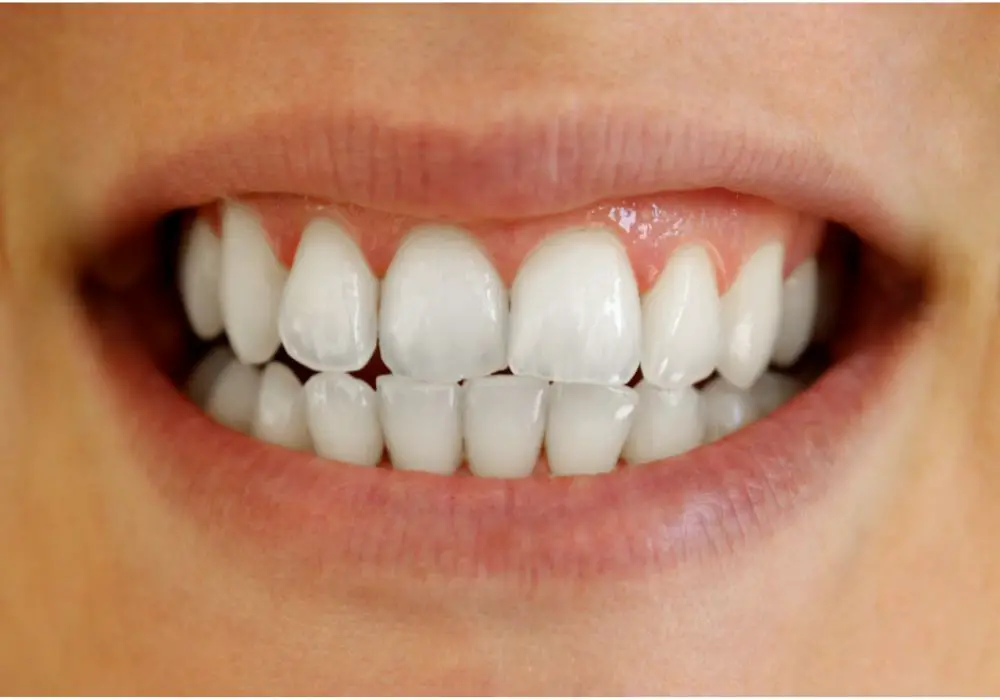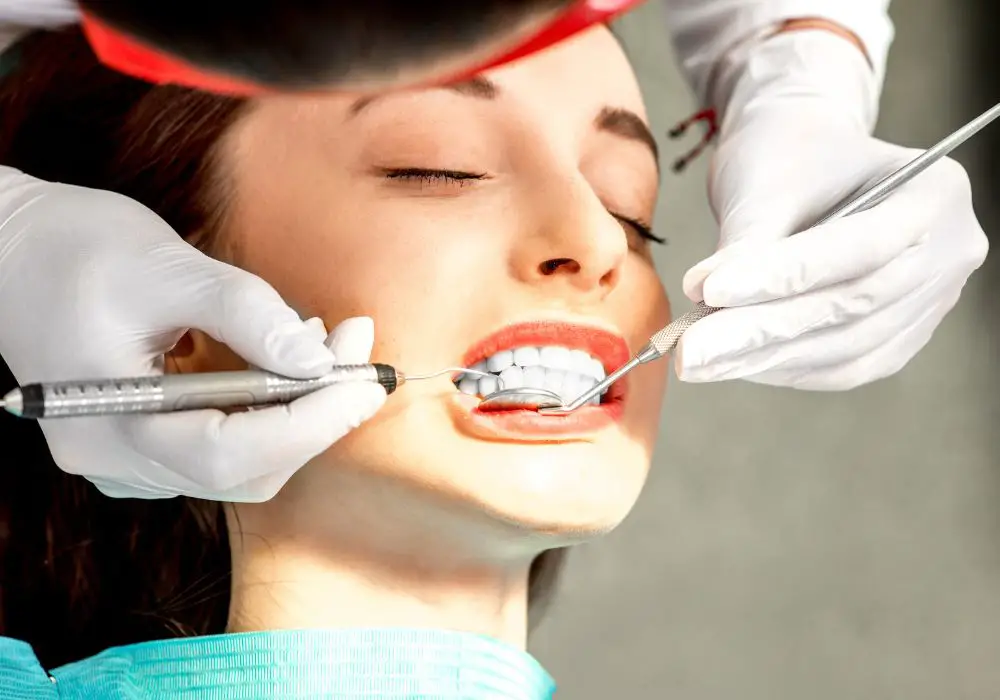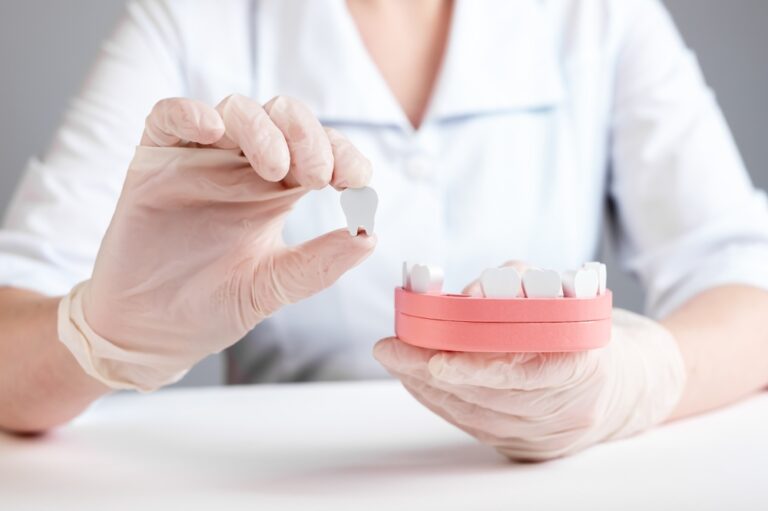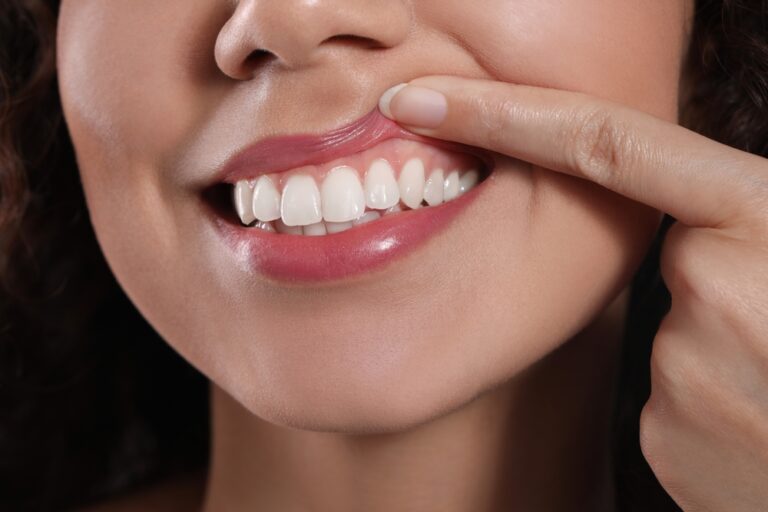Translucent or transparent teeth can be concerning when you notice them starting to appear. Teeth are supposed to be solid white – not clear or greyish. This see-through quality indicates thinning enamel and loss of protection for your teeth. Fortunately, in many cases translucency can be stopped before it progresses.
What Causes Teeth to Become Translucent?
Your teeth are made up of three layers – the inner pulp, middle dentin, and outer enamel. The enamel is the hard, opaque white protective surface. Underneath is softer dentin with a yellowish tint. When enamel thins or deteriorates, the yellowish dentin shows through more, causing that transparent look.
There are several potential reasons enamel thins out over time:
Aging and Wear
As you age, some thinning of enamel naturally occurs. Just as skin loses collagen and elasticity with age, your enamel loses minerals like calcium and phosphate over time. This causes it to become more porous and translucent. The accumulation of tiny cracks and defects in enamel from many years of biting forces also contributes to translucency with age.
Grinding and Clenching
Teeth grinding, also called bruxism, wears down enamel through the constant friction. Clenching your jaws tightly also puts force on teeth that can microscopically fracture the enamel surface. This damage makes enamel thinner and weaker. The small cracks then allow more light to pass through rather than reflecting off the smooth surface.
Acidic Foods and Drinks
Frequent exposure to acidic foods and beverages wears away enamel over time through a process called erosion. Acids like citric acid and phosphoric acid dissolve the mineral content of enamel, weakening its structure. Foods like citrus fruits, tomatoes, carbonated soft drinks, wine, and vinegar are common culprits. Stomach acids from acid reflux or bulimia can also erode enamel.
Abrasion and Chipping
Physical trauma to teeth from habits like nail-biting, chewing on hard items like pens or ice, improper tooth brushing, and use of abrasive whitening products can all lead to chipping or wearing down of enamel. This roughens the enamel structure so more light passes through rather than reflecting back white. Open chips reaching the dentin layer are especially prone to transparency.
Underdeveloped Enamel
Some people naturally have thinner enamel formation. This can be due to genetic conditions like amelogenesis imperfecta or exposure to high fluoride levels during enamel development, also called dental fluorosis. Poor nutrition or illness while your adult teeth were forming can also affect enamel thickness and make it more prone to wearing down later in life.
Lack of Remineralization
Your saliva helps strengthen and rebuild small amounts of enamel that are constantly wearing away through the minerals it contains like calcium, phosphate, and fluoride. However, some medications and health conditions reduce saliva flow, limiting this remineralization process. The lack of repair makes enamel more vulnerable to thinning and transparent spots.
How to Stop Your Teeth From Becoming See-Through

If you notice your front teeth starting to take on a noticeable transparent quality, there are steps you can take to halt the problem before it gets worse:
Modify Your Eating Habits
Reduce your consumption of acidic, erosive foods and beverages. Alternate these with water or milk to help neutralize acids and provide minerals. Wait at least 30 minutes after consuming acidic foods or drinks before brushing teeth as the softened enamel is more vulnerable to abrasion.
Avoid very hard, crunchy foods like nuts, candies, ice cubes or popcorn kernels that could fracture enamel. Consider cutting back on acidic fruit juices, sports drinks, carbonated soft drinks, pickles, and alcohol.
Improve Your Oral Hygiene Routine
Careful brushing and flossing is key to preventing plaque buildup and tooth decay that damages enamel. Use a soft-bristle toothbrush and gentle motions. Over-brushing or using medium/hard bristles risks abrasion. Choose toothpaste with fluoride and hydroxyapatite to strengthen and remineralize enamel.
Floss daily to clean between teeth and reduce acid-producing bacteria. Rinse well after eating. Consider using an alcohol-free mouthwash to neutralize acids.
Address Any Teeth Grinding or Clenching
See your dentist about getting a custom night guard if you grind your teeth in your sleep. This will protect them from the constant grinding forces. Reduce stress, limit caffeine, and get regular massages which may lessen teeth clenching and grinding during the day.
Get More Frequent Dental Cleanings
Professional cleanings every 3-4 months can remove stains and plaque that contribute to enamel erosion. Your dentist or hygienist may also apply protective treatments like sealants, fluoride varnish, or calcium phosphate to vulnerable areas to strengthen enamel.
Try At-Home Remineralization Remedies
Products containing ingredients like stannous fluoride, amorphous calcium phosphate, and hydroxyapatite help rebuild minerals in enamel and reduce translucency. Brush gently with these toothpastes or use daily mouth rinses containing these compounds.
You can also swish coconut oil, sesame oil, aloe vera juice or green tea around your mouth for 10-20 minutes daily to help provide enamel-strengthening minerals naturally.
Consider Professional Treatments
For more significant transparency, your dentist may recommend laser treatments, microabrasion, or remineralization therapy to restore enamel thickness and opacity in affected areas. Veneers, dental bonding, or dental crowns can also mask translucency but require removing some natural tooth structure. Discuss pros and cons with your dentist.
The key is addressing enamel thinning early through both home care and professional help before major structural issues occur. This provides the best chance of rebuilding opaque, healthy enamel.
Reasons Children Get Translucent Teeth

Translucent teeth are not just an adult issue. Children’s teeth can also become see-through much earlier in life for several reasons:
Enamel Hypoplasia
This condition occurs when enamel does not form fully or properly in developing permanent teeth. It leaves patches or the entire tooth surface with weak, thin enamel prone to translucency. Systemic diseases or malnutrition while teeth were forming often cause hypoplasia.
Tooth Decay
Cavities form when bacteria produce acids that demineralize and dissolve through enamel. This decay process creates holes and damage that makes enamel transparent where it has been destroyed. Tooth decay risks are higher with frequent sugary snacks and poor oral hygiene habits.
Acidic Drinks
Frequent juice, soda, sports drinks and other acidic beverages steadily thin and erode enamel over time, especially if sipped steadily throughout the day from spill-proof sippy cups or bottles. The thinner enamel then appears more translucent.
Grinding and Clenching
Many children grind or clench their teeth from stress or as a habit, wearing down the enamel from the pressure and friction. This is especially likely with emerging permanent teeth that do not fit together perfectly.
Braces Issues
The glued brackets used in orthodontic braces can sometimes decalcify and demineralize enamel around where they are attached, leading to so-called “white spot lesions.” These opaque spots stand out against the thinner adjacent enamel.
Fluorosis
Consuming excess supplemental fluoride while permanent teeth are still developing can cause fluorosis. This results in mottled, opaque areas of enamel that surround sections of thinner, pitted enamel more prone to decay.
The key is protecting children’s enamel early and getting prompt treatment for any issues that arise to avoid larger problems. Annual dental exams, fluoride treatments, sealants and early orthodontic evaluation can help prevent childhood translucency issues.
Is Teeth Whitening Harmful to Enamel?
Some people worry that whitening treatments might damage the enamel or make it more transparent. Teeth whitening is generally safe when products are used correctly, but improper overuse could potentially contribute to thinning enamel in some cases.
Here are some tips for keeping your enamel healthy while whitening:
- Avoid over-the-counter products with very high peroxide concentrations. Lower concentrations (10-20% carbamide peroxide) are gentler.
- Use custom-fitted whitening trays from your dentist instead of strips or paint-on gels to limit contact with gums.
- Follow instructions carefully and don’t exceed recommended treatment times.
- Take breaks between whitening sessions to allow enamel to rehydrate and remineralize.
- Get touch-up treatments periodically from your dentist instead of daily whitening.
- Avoid trying to bleach teeth to an unnaturally bright white shade.
- Have teeth cleaned professionally to remove stains before whitening.
- Get enamel health and thickness evaluated by your dentist prior to starting any OTC whitening.
With appropriate precautions and moderation, even frequent coffee-drinkers can benefit from whiter teeth without jeopardizing enamel strength and opacity. But improper use of very high peroxide concentrations could potentially cause changes in enamel translucency and texture in some cases.
Seeing Through Your Teeth? When to Visit the Dentist

Increased translucency or transparency in your teeth can be an early warning sign of issues needing dental evaluation and treatment. Schedule an appointment promptly if you notice any of the following changes:
Sudden Onset of Translucent Spots
Teeth normally yellow slightly and enamel thins gradually over decades of aging. But if you notice pronounced transparent spots developing rapidly over just weeks or months, that signifies active damage requiring urgent assessment.
Increased Temperature Sensitivity
As enamel thins, teeth become more sensitive to hot and cold foods or drinks, air temperature changes, and contact. The thinner the enamel, the more temperature sensations reach the inner dentin layer.
New Chips, Cracks or Rough Areas
Fresh chips, cracks, or sudden areas of roughness likely indicate broken or fractured enamel vulnerable to decay. Cracked or rough spots allow bacteria and acids to penetrate enamel, increasing damage.
Discoloration of Translucent Areas
Grey, yellowish or brownish discoloration visible through thin spots also signifies inner structural changes needing evaluation. Stains indicate open passageways in enamel allowing pigments inside the tooth.
Unexplained Pain or Toothache
Sudden tooth pain, especially with temperature changes, can mean inner components are exposed due to substantial enamel loss. Toothaches always warrant prompt dental exam to check for infection.
Acid Erosion Symptoms
Frequent nausea, reflux, or vomiting may be eroding enamel from excessive acid. Bulimia, gastric reflux, medication side effects, or medical conditions should be evaluated.
Seeing your dentist promptly when you notice increasing translucency can help identify the underlying cause and allow prompt treatment to prevent further enamel deterioration or tooth damage. In many cases, early intervention can help rebuild and restore enamel strength and opacity.
Are My Translucent Teeth Unhealthy? 4 Key Signs
Mild translucency along the biting edges of front teeth or yellowing at the back teeth may be normal aging. But pronounced translucency in smooth, untreated tooth surfaces can indicate underlying problems. Here are 4 signs of unhealthy enamel related to see-through spots:
1. Thin or Cracked Enamel
Substantial areas of thin enamel lack durability and fracture easily under biting forces. Cracks allow decay-causing bacteria inside the tooth. Fragile enamel also erodes faster when exposed to acidic foods.
2. Rapid Staining
Porous, demineralized enamel absorbs dark stains rapidly even with careful brushing. Grey or brown discoloration visible through translucent spots indicates unhealthy enamel.
3. Temperature Sensitivity
Thin enamel transmits temperature changes straight to the nerves inside teeth, causing sharp sensitivity to hot or cold foods and drinks. Mild sensitivity is common, but pronounced pain indicates very thin enamel.
4. Active Decay
Transparent areas often surround new cavities as decay bacteria dissolve through minerals in enamel. White, brown or grey spots indicate active decay requiring prompt treatment.
While some enamel thinning happens naturally over decades, sudden translucency with any of these signs means your enamel health is compromised. Seeking proactive treatment can help re-strengthen and remineralize enamel to restore opacity and function before major damage occurs.
I Chew Ice – Could This Cause Clear Teeth?

Many people enjoy chewing ice cubes or crushed ice. But this seemingly harmless habit can cause your teeth to become transparent over time. Here’s why:
It Chips and Cracks Enamel
Ice is a very hard, solid substance. Chewing it subjects teeth to concentrated forces in small areas that can fracture the enamel surface. These tiny cracks then allow dentin to show through, creating opaque spots and lines.
It Erodes Enamel
Ice cubes fresh from the freezer are very cold – often below freezing temperature. Alternating this extreme cold immediately with body temperature as you chew causes expansion and contraction stress on enamel. This physical shock weakens and erodes enamel structure.
It Abrasively Wears Down Enamel
The friction of crunching ice gradually wears away at the enamel coating from sheer physical abrasion. Often chunks of enamel will chip off, causing pitting. This abrasive grinding also smooths the enamel surface so it no longer reflects light properly.
It Worsens Acid Erosion
Chewing ice bathes teeth in cold water, which causes constriction of blood vessels. This reduces protective saliva flow and makes enamel softer and more prone to erosion from acids.
The longer and more frequently you chew ice over years, the more enamel damage accumulates leading to transparency. Kicking the habit now prevents further see-through spots. Your dentist can assess current thinning and help re-strengthen areas that are translucent.
Frequently Asked Questions
1. Why do some people have naturally transparent teeth?
Certain people are just born with naturally thinner enamel or differences in tooth structure that predispose them to some translucency. Possible reasons include:
- Genetically thinner enamel – Runs in family
- Enamel hypoplasia – Underdeveloped enamel
- Dentinogenesis imperfecta – Genetic issue with dentin mineralization
- Amelogenesis imperfecta – Genetic issue with enamel formation
- Fluorosis – Overexposure to fluoride while teeth developing
Seeing a dentist can help determine if an underlying genetic condition is causing higher than normal translucency. Specific treatment can help strengthen and protect enamel. But some natural level of translucency may persist.
2. Can clear teeth mean you have cancer?
No, having see-through teeth or spots of translucency is not a sign of cancer or leukemia in the body. Tooth translucency is caused by structural changes or loss of the outer enamel layer – not cancer. However, oral cancer can sometimes lead to loose teeth due to damage of bone and ligaments. Any unexplained dental changes should be examined.
3. Do clear teeth mean unhealthy teeth?
Clear spots in teeth often do indicate unhealthy enamel. Translucency signifies loss of the protective enamel layer, which leaves teeth weaker and more prone to decay and temperature sensitivity.
However, some natural translucency around the edges of teeth or slight yellowing toward the back is normal with aging. But pronounced translucency of smooth front or side tooth surfaces usually means enamel needs strengthening.
4. Can you reverse translucency and make teeth more opaque again?
In many cases, yes. If enamel thinning is detected early, dentists can help remineralize and rebuild enamel opacity using fluoride, calcium phosphate, or stannous fluoride treatments. But if severe structural damage has occurred, transparency may be irreversible without dental veneers or crowns to cover translucent areas. The key is addressing it early.
5. Why do some celebrities intentionally make their teeth transparent?
Some celebrities embrace an ultra-bright, over-whitened smile that necessitates removing outer enamel or intentionally thinning it using abrasive products. A see-through look is often perceived as trendy and youthful.
But this is very damaging to natural teeth. Enamel does not regrow once removed. Intentionally seeking an unnaturally clear appearance risks tooth decay, temperature sensitivity, and eventual tooth loss as unprotected dentin wears down over time. Healthy teeth should maintain natural opaque enamel.






